REFLEX
Reflexes are an action that is performed without conscious thought as a response to a stimulus. Eg. When light acts as a stimulus, the pupil of the eye changes in size or sudden jerky withdrawal of hand or leg when pricked by a pin.
The presence and strength of a reflex is an important sign of nervous system development and function.
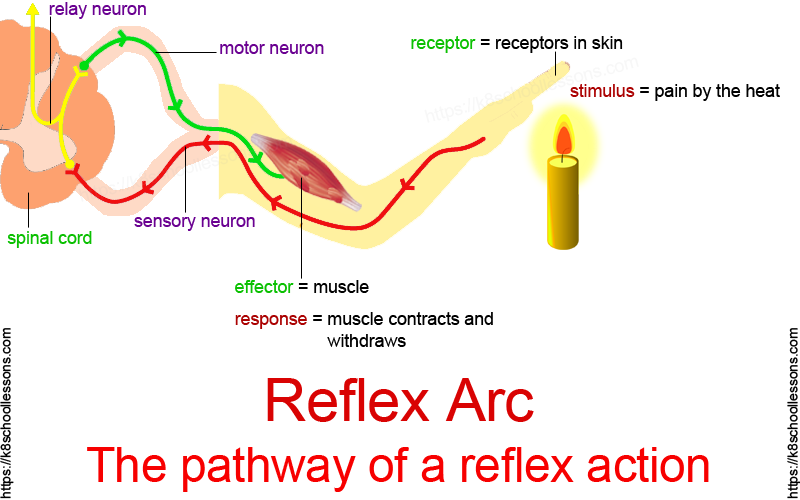
What is Reflex Integration?
Primitive Reflex Integration
Reflex integration is a process to help a neurological arc that has both a specific stimulus and a predictable response or responses work more efficiently. Primitive reflexes lay the foundation for the nervous system and continue to work in concert with it throughout our lives.
Primitive reflexes are not enemy. These are repetitive, automatic movements that are essential for development of head control, muscle tone, sensory integration and development. They form the basis of our postural, lifelong reflexes. These reflexes naturally inhibit in sequential order during the first year, and replacement reflexes, called postural reflexes, emerge. Postural reflexes are more mature patterns of response that control balance, coordination and sensory motor development.
Integration of the primitive reflexes important because:
- They are the basic of our nervous system and our ability to move.
- They originate in the brain stem which is responsible for survival. If under stress we are still moving from here then we are not able to easily access our prefrontal cortex where we can process and analyze information.
- As we get older our unintegrated reflexes trigger the flight/flight response even when there is no ‘logical’ reason for the stress.
- When movements come from active primitive reflex movement patterns then there are challenges with coordination.
- Low muscle tone; muscle weakness; chronic body aches; poor endurance; and fatigue.
Signs of retained reflexes
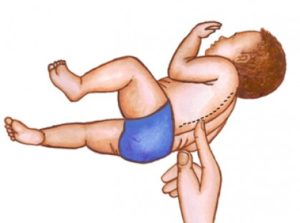
- Poor impulse control
- Fidgeting
- Poor dexterity
- Interrupted eye tracking
- Toe walking
- Motion sickness
- Difficulty changing gaze from far to near
- Poor posture
Primitive reflexes and its functional implications :
| PRMITIVE REFLEX | PURPOSE OF REFLEX | HOW TO CHECK | APPEARS | SHOULD INTEGRATE BY | SIGNS OF RETENTION |
|---|---|---|---|---|---|
Asymmetrical Tonic Neck Reflex (ATNR)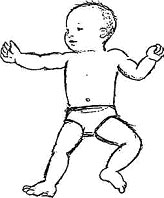 | To assist baby through birth canal and develop cross patterns movements | To elicit this reflex, turn child head to one side. This should cause the arm and leg on the side to extend or straighten, while his other arm and leg will flex. | Birth | 6 months | Poor eye-hand coordination, Difficulty with handwriting, Trouble Crossing Midline, Poor visual tracking for Reading and Writing |
Tonic Labyrinthine Reflex (TLR)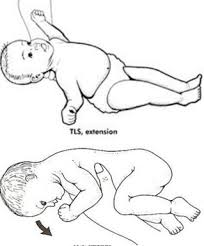 | Basis for head management and postural stability using major muscle groups. | In TLR reflex, tilting the head back while lying on the back causes the back to stiffen and even arch backwards, causes the legs to straighten, stiffen, and push together, toes to points, arms to bend at the elbows and wrists and hands to become fisted or the fingers to curl. | In utero | 3 and half year | Difficulty keeping the head in a flexed position, Poor balance, Motion sickness, Toe walkers, Hypo or Hyper-tonus (muscle tone), Dislike of physical education (PE), Ocular-motor difficulties (reading/writing), Orientation and spatial difficulties. |
Symmetrical Tonic Neck Reflex (STNR)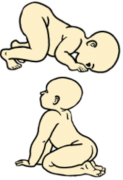 | Prepare for crawling | A normal response in infants is to assume the crawl position by extending the arms and bending the knees when the head and neck are | 6-9 months | 9-11 months | Tendency to slump while sitting, “W” sitting , Simian (ape-like) walk, Poor eye-hand coordination, difficulties with readjustment of binocular vision (child cannot change focus easily from blackboard to desk), |
Moro Reflex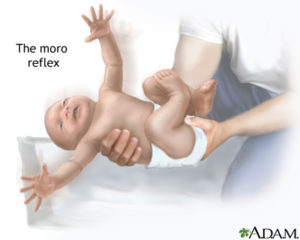 | Primitive flight or fight reaction | When fail to support or hold child’s neck and head or if child becomes startled by a loud noise, bright light or sudden touch, the arms of child will thrust outward and then curl in as to embrace themselves. | Birth | 2-4 months | Hyper sentitive, Hyper reactive, Poor impulse control, Emotional immaturity, Sensory overload. |
Spinal Galant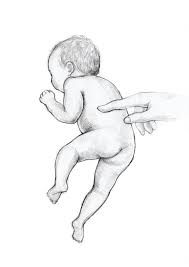 | Assist baby with birth process | Hold or lay the child on their stomach and stroking along one side of their spine. The normal reaction is for the newborn to flex sideways toward the stimulated side. | Birth | 3-9 months | unable to sit still (‘ants in the pants’ child), possible scoliosis, poor posture, hip rotation on one side when walking, chronic digestive issues. |
Palmar reflex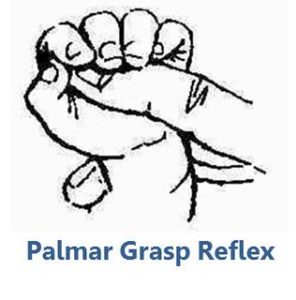 | Automatic flexing fingers to grab objects | It is demonstrated by placing your finger or an object into your baby's open palm, which will cause a reflex grasp or grip | Birth | 5-6 months | Poor manual dexterity, Poor pencil grip, Messy handwriting, |
Fear Paralysis Reflex (FPR)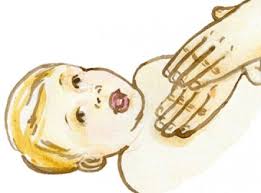 | first step in learning to cope with stress | In the embryonic stage, embryo reacts to stress and stimulation by withdrawing and freezing. | Embronic stage | Birth | Underlying anxiety or negativity, low self-esteem, Depression/isolation/withdrawal , Fear of separation from a loved one, Elective mutism, Withdrawal from touch, Extreme fear of failure, Low tolerance to stress . |
Landau Reflex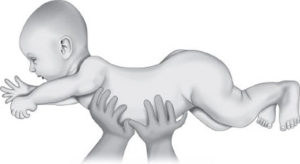 | Assist with postural development | When the child is supported horizontally in the prone position, the head rises and the back arches. | 4-5 months | 1-3 year | Poor motor development |
Autism and Reflex integration
Persistence of primitive reflexes is related to autistic traits and we should have to observe the motor domain as a promising early sign of ASD (Bhat et al., 2011, Bhat et al., 2012, Kaur et al., 2015, and also for stratification of ASD (Esposito & Pasca, 2013).
The abnormalities in reflex functions can cause a deviation in neurosensorimotor integration, and can contribute significantly to problems in development of children with ASD, specifically in areas of: behavior, inner control, emotional regulation, communication and language development, and cognitive processing.
Almost all of the movement disturbances in autism can be interpreted as infantile reflexes “gone astray”; i.e., some reflexes are not inhibited at the appropriate age in development, whereas others fail to appear when they should (Teitelbaum et al., 2004).
Children with ASD either skip all this together or show delayed development of many reflex patterns such as Hands Grasp, Hands Pulling, Hands Supporting, Crawling, Asymmetrical Tonic Neck Reflex, Symmetrical Tonic Neck Reflex, Ocular-Vestibular, and other reflex patterns.
Approaches for Reflex Integration :
1.Neurosensorimotor Reflex Integration :
THE MNRI® METHOD APPROACH & PROGRAMS: Masgutova Neurosensorimotor Reflex Integration (MNRI) Method began with Dr. Masgutova in 1989.
The primary focus of the MNRI Method is to support the integration process of primary motor reflex patterns regardless of a person’s condition or age.
The MNRI basic assessment is designed to determine the integration state of each primary motor reflex pattern. After completing an MNRI Method assessment, the state of each reflex pattern is characterized as functional, dysfunctional, or pathological.
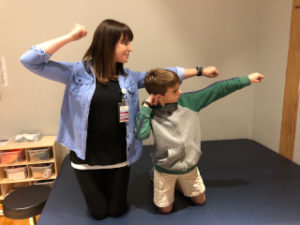
Each treatment plan consists of the set of primary motor reflex patterns found to be dysfunctional during an individual MNRI assessment.
The steps followed to during the integration process generally are:
Sensory motor pairing
Integrating exercises
Repetition
Reassessment of reflex state
https://www.youtube.com/channel/UC2P8LEBd1pRIvxyJxRXSVkg
https://www.youtube.com/watch?v=oM9-P3gRuH8
2. RHYTHMIC MOVEMENT TRAINING
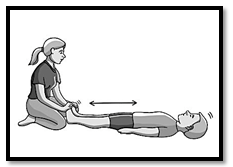
Rhythmic movements are gentle rocking and reflex integration movements that stimulate neural pathways and promote learning, emotional balance and ease of movement..
RMT is based on the work of Kerstin Linde, a Swedish movement training specialist, who developed movements based on her observations of how infants are meant to move. The movements in Rhythmic Movement Training are based on replicating the movements that infants naturally make.
RMT works with integrating the retained, or underdeveloped, infant reflexes (also called primitive reflexes or neo-natal reflexes) that are involved in learning challenges such as,
dyspraxia, writing problems, focusing and comprehension challenges, co-ordination difficulties and Asperger’s Syndrome.
https://www.youtube.com/watch?v=PN5qCkS6GFE
https://iblog.dearbornschools.org/medlenm/2019/05/22/rhythmic-movement-training/
References:-
-
- Infantile reflexes gone astray in autism (Philip Teitelbaum)
- Reflex based interventions for children with autiam and delopmental isabilities-An evidence based approach (Hannah barret,Audrey benson)
- Progress with neurosensorymotor reflex integration for children with ASD(Svetlana Masgutova)
- Persistent primary reflexes affect motor acts: Potential implications for autism spectrum disorder (AliceChinelloaValentinaDi Gangib)
- Persistence of primitive reflexes and associated motor problems in healthy preschool children (Ewa Z. Gieysztor, Anna M. Choińska,)
- https://masgutovamethod.com/
- https://www.rhythmicmovement.org/
- https://www.brainbalancecenters.com/



0 Comments